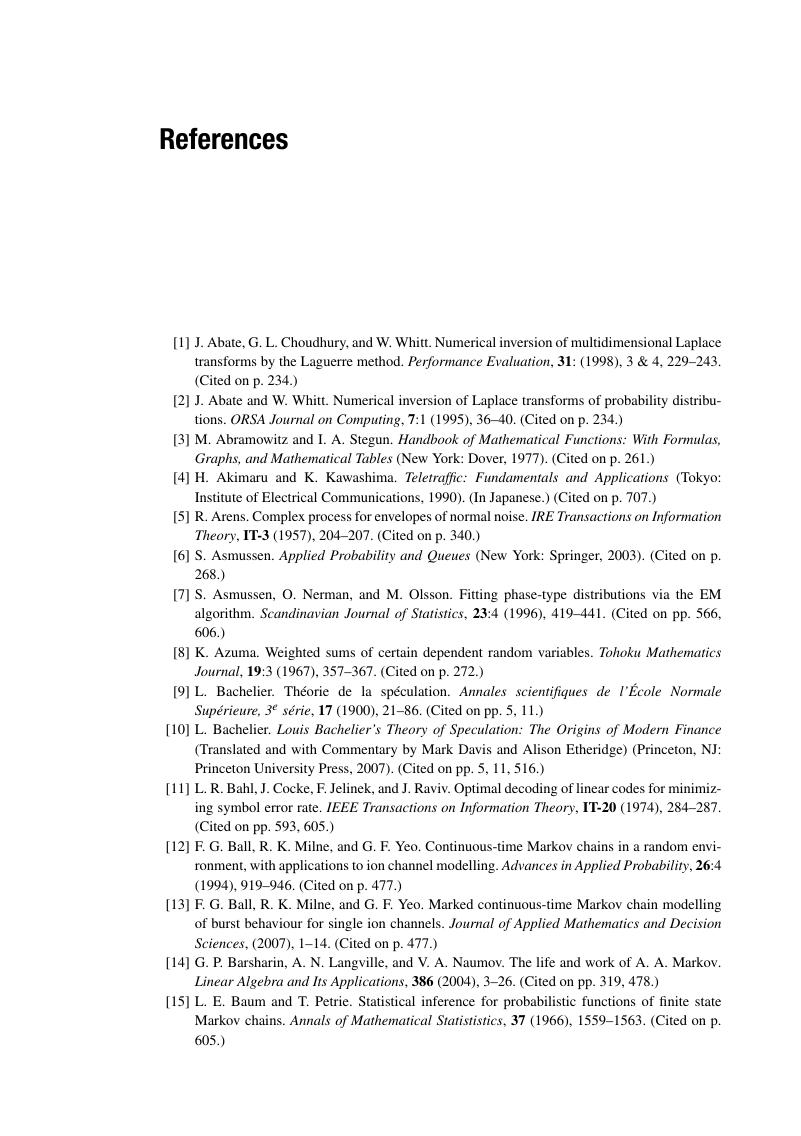 Probability, Random Processes, and Statistical Analysis
Probability, Random Processes, and Statistical Analysis Book contents
- Frontmatter
- Contents
- List of abbreviations and acronyms
- Preface
- Acknowledgments
- 1 Introduction
- Part I Probability, random variables, and statistics
- Part II Transform methods, bounds, and limits
- Part III Random processes
- Part IV Statistical inference
- Part V Applications and advanced topics
- References
- Index
- References
References
Published online by Cambridge University Press: 05 June 2012
- Frontmatter
- Contents
- List of abbreviations and acronyms
- Preface
- Acknowledgments
- 1 Introduction
- Part I Probability, random variables, and statistics
- Part II Transform methods, bounds, and limits
- Part III Random processes
- Part IV Statistical inference
- Part V Applications and advanced topics
- References
- Index
- References
Summary

- Type
- Chapter
- Information
- Probability, Random Processes, and Statistical AnalysisApplications to Communications, Signal Processing, Queueing Theory and Mathematical Finance, pp. 740 - 758Publisher: Cambridge University PressPrint publication year: 2011


